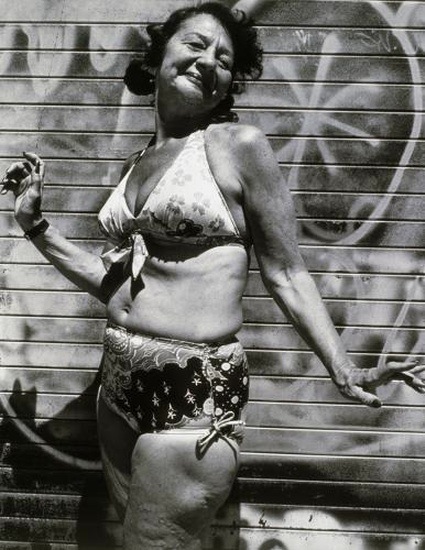 Seymour Jacobs, Brighton Beach, 1975
Seymour Jacobs, Brighton Beach, 1975
When i’m in Paris, i go to the Maison Européenne de la Photographie. Mostly out of habit. MEP is not only located by Le Marais where i hang out rain or shine, it also presents striking exhibitions. The main exhibition at the MEP right now is Autour de l’extrême. The ‘extrême’ portrays themes likely to disorient, revolt, amaze, shock, astonish or make you feel uncomfortable. One would think that it is difficult to provoke these emotions in these days of ‘i’ve seen it on tv before’. Yet, several recent exhibitions took up the challenge with various degrees of success. For example, Disquieting Images which remains open for a few more weeks at the Triennale in Milan and Controverses which toured Europe last year.
Maybe the reason why most of the images in the MEP show manage to move us (even if they date back a few decades) is that we recognize their documentary dimension. What they explore and represent are the social, political, aesthetic, cultural or scientific limits of life.
But paradoxically, to make transgression visible is also to make it acceptable. When faced with the extra-ordinary, photography has the power to make reality banal. This means that what these images most often show is actually the process of approaching the extreme: its broader context, which has a distancing effect upon it.
No full-fledged report on this one because right now, i’m done with exhibitions that multiply shock, sex and rock ‘n’ roll to court the public (strangely enough, Autour de l’Extrême seems to have attracted less controversy in the French capital than the Larry Clark show at the Musée d’Art Moderne.) On the other hand, next month is another year and i guess it will bring me more excuses to trail extreme or disquieting exhibitions and see some fantastic pieces. Here’s a selection of the ones i saw at the MEP:
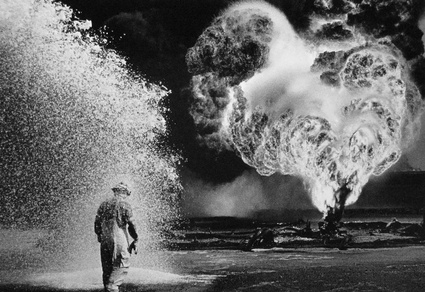 Sebastião Salgado, Fireball, Greater Burhan Oil Field, Kuwait, 1991
Sebastião Salgado, Fireball, Greater Burhan Oil Field, Kuwait, 1991
30 days after the end of the war against Iraq, Sebastião Salgado traveled to the Greater Burhan Oil Field. Kuwaiti oil wells had been set on fire by retreating Iraqi forces and were still burning. The photographer talked about his experience to The Guardian: Working in the middle of all this was extraordinary. One of my lenses got warped by the heat, so I was left with just two: a 35mm and a 60mm. This obliged me to stay very close to these guys the whole time. As a result, I was covered in oil, and felt so involved with the danger, the environment, the strange beauty and the hard work that was happening in front of me. The only way I could keep going was to carry a two-litre tank of petrol and a roll of kitchen paper inside my photo bag. I would put some petrol on the kitchen roll, clean my hands, the lens and the back of the camera, then go in again.
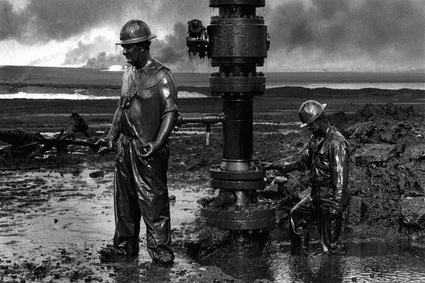 Sebastião Salgado, Canadian firefighters in Kuwait battle to seal an oil well, 1991
Sebastião Salgado, Canadian firefighters in Kuwait battle to seal an oil well, 1991
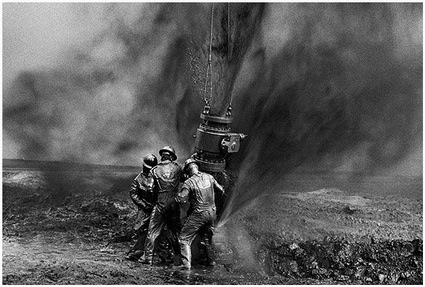 Sebastião Salgado, Oil well, Burhan, Kuwait, 1991
Sebastião Salgado, Oil well, Burhan, Kuwait, 1991
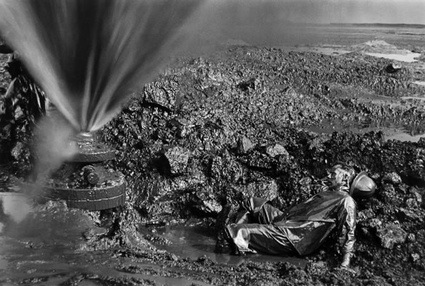 Sebastião Salgado, Fallen worker: A fire fighter from the Safety Boss team knocked unconscious by a blast of gas from the wellhead, Kuwait, 1991
Sebastião Salgado, Fallen worker: A fire fighter from the Safety Boss team knocked unconscious by a blast of gas from the wellhead, Kuwait, 1991
I felt uncomfortable when i saw George Dureau’s photographs of amputees. But no pity. Dureau’s portraits convey too much respect, defiance, strength.
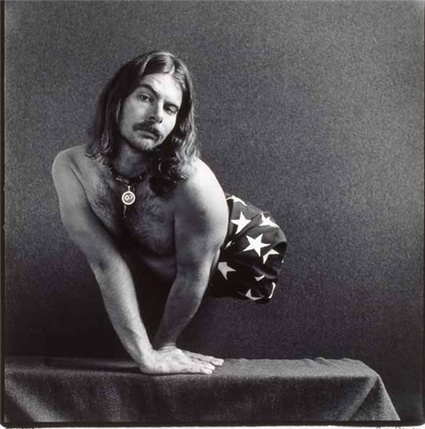 George Dureau, Bergamo Joseph Robinson, 1978
George Dureau, Bergamo Joseph Robinson, 1978
In the ’80s and ’90s, 25/34 Photographes (Ralf Marsault / Heino Muller) portrayed skinheads, punk and other people living at the margin of society.
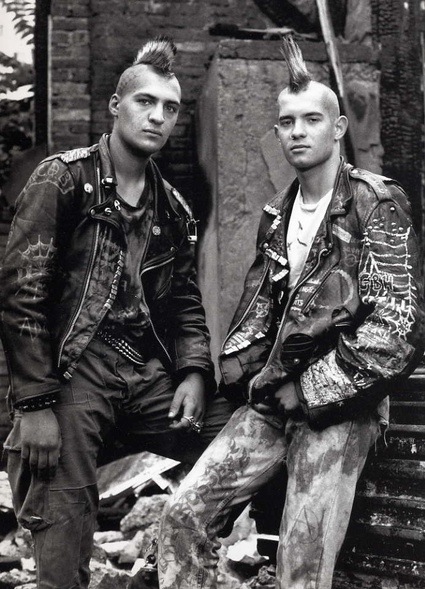 25/34 Photographes (Ralf Marsault / Heino Muller), Scody, Crass, Paris, 1988
25/34 Photographes (Ralf Marsault / Heino Muller), Scody, Crass, Paris, 1988
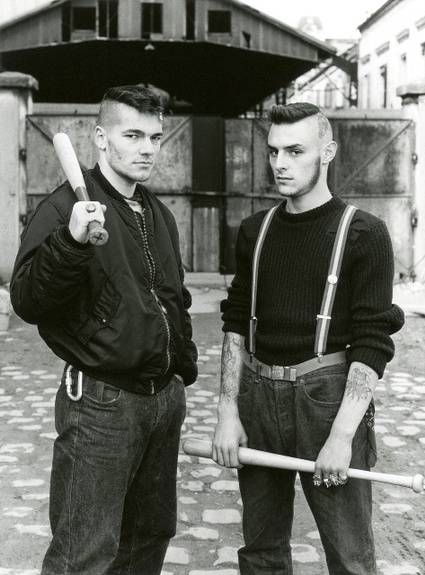 25/34 Photographes (Ralf Marsault / Heino Muller), Julien, Jeff, Paris 1988
25/34 Photographes (Ralf Marsault / Heino Muller), Julien, Jeff, Paris 1988
You can download the Fin de Siècle series for free (PDF)
Rogerio Reis documented the practice of Train surfing in Rio. The sport is obviously illegal and extremely dangerous. Several young people have been injured or killed, especially when their body hits by accident one of the electric wires running above the tracks.
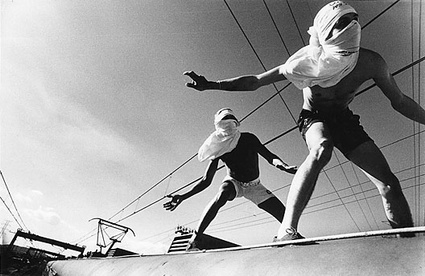 Rogerio Reis, Surfistas de Trem (Train Surfers), 1995
Rogerio Reis, Surfistas de Trem (Train Surfers), 1995
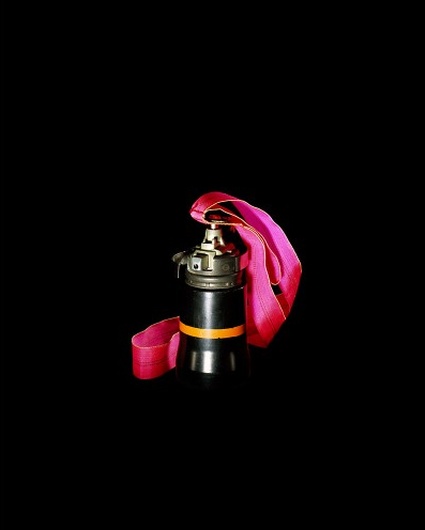 Raphaël Dallaporta, from the Antipersonnel series
Raphaël Dallaporta, from the Antipersonnel series
Raphaël Dallaporta‘s landmines come in all shapes and guises. They are framed and lighted like precious jewelry, French perfumes or rare beetles. It’s only when you look at the labels that accompany them that you realize they are instruments of death and dismemberment. “The US is the country that does the most to remove landmines,” explained the photographer, noting the source of one of them. “But the US is also a big manufacturer of them. Imagine a cigarette manufacturer being praised for making nicotine patches.”
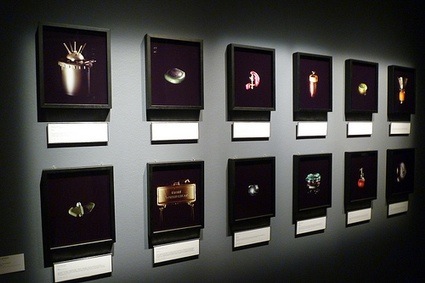 View of Raphaël Dallaporta’s Antipersonnel series at the MEP
View of Raphaël Dallaporta’s Antipersonnel series at the MEP
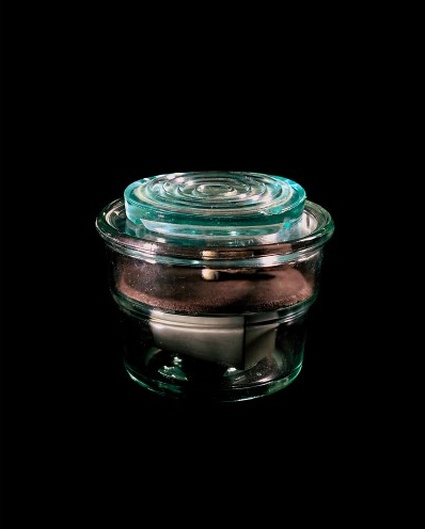 Raphaël Dallaporta, from the Antipersonnel series
Raphaël Dallaporta, from the Antipersonnel series
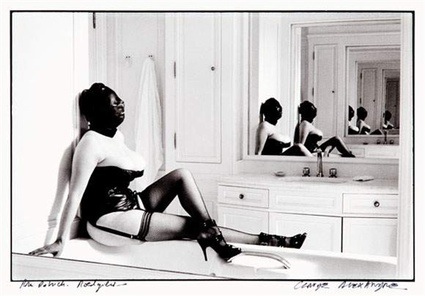 Claude Alexandre, Untitled, 1982. From the series Fétiche, 1980 – 1989
Claude Alexandre, Untitled, 1982. From the series Fétiche, 1980 – 1989
In the late 1960s, Bruce Davidson spent two years photographing one block in East Harlem, knocking on doors, asking for permission to photograph what exactly made up the lives of the residents of the neighborhood (slideshow.)
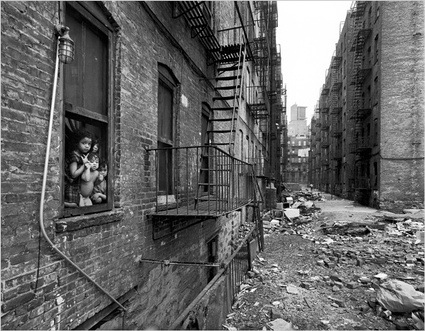 Bruce Davidson, from the series East 100th Street, 1966
Bruce Davidson, from the series East 100th Street, 1966
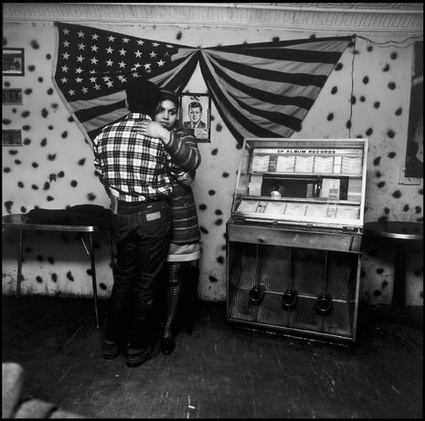 Bruce Davidson, from the series East 100th Street, 1966
Bruce Davidson, from the series East 100th Street, 1966
Lens Culture has a charming interview with war photographer Christine Spengler.
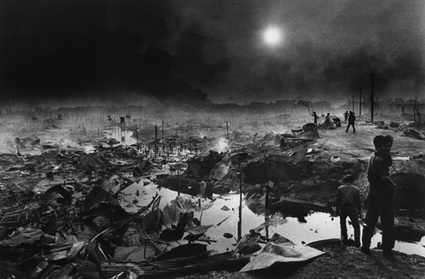 Christine Spengler, Cambodia, Bombardment of Phnom-Penh, 1975
Christine Spengler, Cambodia, Bombardment of Phnom-Penh, 1975
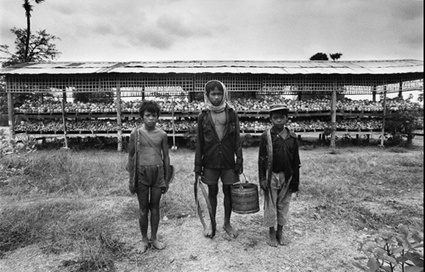 Christine Spengler, Cambodia. Mass grave of Choeung Ek, 1985
Christine Spengler, Cambodia. Mass grave of Choeung Ek, 1985
Andres Serrano’s portraits of Klansmen will probably never cease to fascinate and shock me. The shock however comes mostly from the fact that this gang still exists.
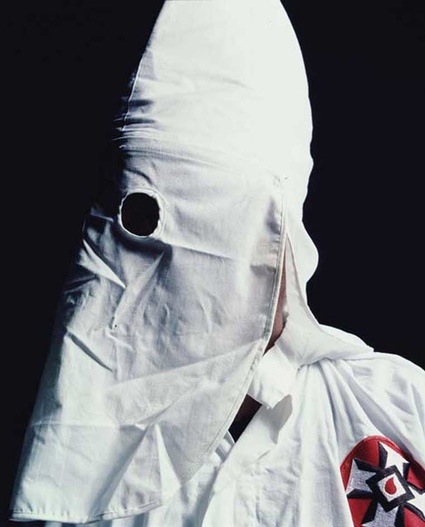 Andres Serrano, The Klan Klansman, (Great Titan of The Invisible Empire VII), 1992
Andres Serrano, The Klan Klansman, (Great Titan of The Invisible Empire VII), 1992
Serrano had several works in the exhibition. Including a couple from his series The Morgue which pictures the corpses or portions of corpse of people who have met with an unnatural death.
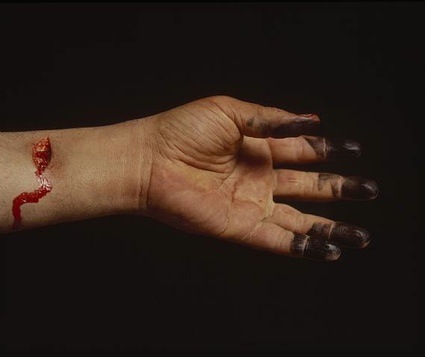 Andres Serrano, The Morgue (Knifed To Death I), 1992
Andres Serrano, The Morgue (Knifed To Death I), 1992
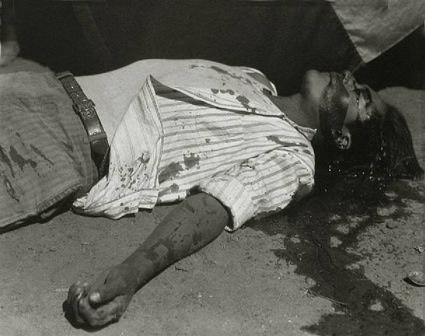 Manuel Álvarez Bravo, Obrero en huelga, asesinado (Striking Worker, Assassinated), 1934
Manuel Álvarez Bravo, Obrero en huelga, asesinado (Striking Worker, Assassinated), 1934
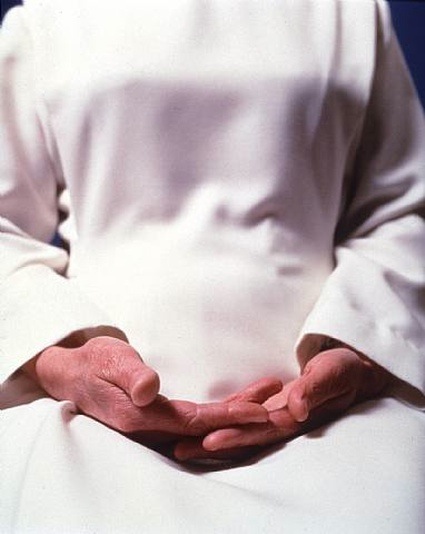 Andres Serrano, The Church (Soeur Jeanne Myriam, Paris), 1991
Andres Serrano, The Church (Soeur Jeanne Myriam, Paris), 1991
Autour de l’Extrême was curated by Milton Guran and Jean-Luc Monterosso. The exhibition runs until 30 January 2011 at the Maison Européenne de la Photographie, Paris.
Previously at the Maison Européenne de la Photographie: Electromagnetic Bodies and (Un)Inhabitable? – Art of Extreme Environments.
